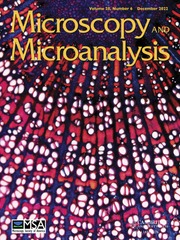Crossref Citations
This article has been cited by the following publications. This list is generated based on data provided by
Crossref.
Niu, Ying-Jie
Zhou, Wenjun
Guo, Jing
Nie, Zheng-Wen
Shin, Kyung-Tae
Kim, Nam-Hyung
Lv, Wen-Fa
and
Cui, Xiang-Shun
2017.
C-Phycocyanin protects against mitochondrial dysfunction and oxidative stress in parthenogenetic porcine embryos.
Scientific Reports,
Vol. 7,
Issue. 1,
Jiang, Hao
Liang, Shuang
Yao, Xue-Rui
Jin, Yong-Xun
Shen, Xing-Hui
Yuan, Bao
Zhang, Jia-Bao
and
Kim, Nam-Hyung
2018.
Laminarin improves developmental competence of porcine early stage embryos by inhibiting oxidative stress.
Theriogenology,
Vol. 115,
Issue. ,
p.
38.
Maside, Carolina
Martinez, Cristina A.
Cambra, Josep M.
Lucas, Xiomara
Martinez, Emilio A.
Gil, María Antonia
Rodriguez‐Martinez, Heriberto
Parrilla, Inmaculada
and
Cuello, Cristina
2019.
Supplementation with exogenous coenzyme Q10 to media for in vitro maturation and embryo culture fails to promote the developmental competence of porcine embryos.
Reproduction in Domestic Animals,
Vol. 54,
Issue. S4,
p.
72.
Heydarnejad, Alireza
Ostadhosseini, Somayyeh
Varnosfaderani, Shiva Rouhollahi
Jafarpour, Farnoosh
Moghimi, Ali
and
Nasr‐Esfahani, Mohammad Hossein
2019.
Supplementation of maturation medium with CoQ10 enhances developmental competence of ovine oocytes through improvement of mitochondrial function.
Molecular Reproduction and Development,
Vol. 86,
Issue. 7,
p.
812.
Delkhosh, Aref
Delashoub, Masoud
Tehrani, Ali Asghar
Bahrami, Ali Mohammad
Niazi, Vahid
Shoorei, Hamed
Banimohammad, Majid
Kalarestaghi, Hossein
Shokoohi, Majid
Agabalazadeh, Amin
and
Mohaqiq, Mahdi
2019.
Upregulation of FSHR and PCNA by administration of coenzyme Q10 on cyclophosphamide‐induced premature ovarian failure in a mouse model.
Journal of Biochemical and Molecular Toxicology,
Vol. 33,
Issue. 11,
Luo, Dan
Zhang, Jia-Bao
Liu, Wen
Yao, Xue-rui
Guo, Hao
Jin, Zhe-Long
Zhang, Ming-Jun
Yuan, Bao
Jiang, Hao
and
Kim, Nam-Hyung
2020.
Leonurine improves in vitro porcine embryo development competence by reducing reactive oxygen species production and protecting mitochondrial function.
Theriogenology,
Vol. 156,
Issue. ,
p.
116.
Niu, Ying‐Jie
Zhou, Wenjun
Nie, Zheng‐Wen
Shin, Kyung‐Tae
and
Cui, Xiang‐Shun
2020.
Melatonin enhances mitochondrial biogenesis and protects against rotenone‐induced mitochondrial deficiency in early porcine embryos.
Journal of Pineal Research,
Vol. 68,
Issue. 2,
Yu, Wen-Jie
Chen, Cheng-Zhen
Peng, Yan-Xia
Li, Ze
Gao, Yan
Liang, Shuang
Yuan, Bao
Kim, Nam-Hyung
Jiang, Hao
and
Zhang, Jia-Bao
2021.
Schisanhenol improves early porcine embryo development by regulating the phosphorylation level of MAPK.
Theriogenology,
Vol. 175,
Issue. ,
p.
34.
Marsico, Thamiris Vieira
Silva, Mara Viana
Valente, Roniele Santana
Annes, Kelly
Rissi, Vitor Braga
Glanzner, Werner Giehl
and
Sudano, Mateus José
2023.
Unraveling the Consequences of Oxygen Imbalance on Early Embryo Development: Exploring Mitigation Strategies.
Animals,
Vol. 13,
Issue. 13,
p.
2171.


